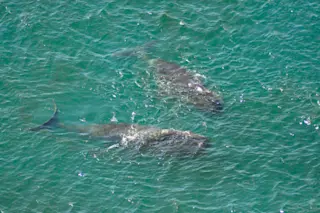The U.S. Supreme Court has agreed to take on the above question in its next term, when it will wrestle with a complicated lawsuit between the Navy and the Natural Resources Defense Council. For years, the environmental group has been fighting to limit the Navy's use of sonar in training exercises off the California coast, arguing that the sonar injures and disorients whales and other marine mammals.
Environmentalists successfully sued the Pentagon over the practice in March, forcing major changes in the Navy's annual offshore training exercises. A federal judge ruled it was "constitutionally suspect" for President Bush to issue a national security exemption so no environmental impact assessment was carried out [CNN]. The Supreme Court won't try to determine whether the sonar is causing confused whales to beach themselves, but will instead weigh in on whether the executive branch had the right to preempt an environmental law by granting ...














